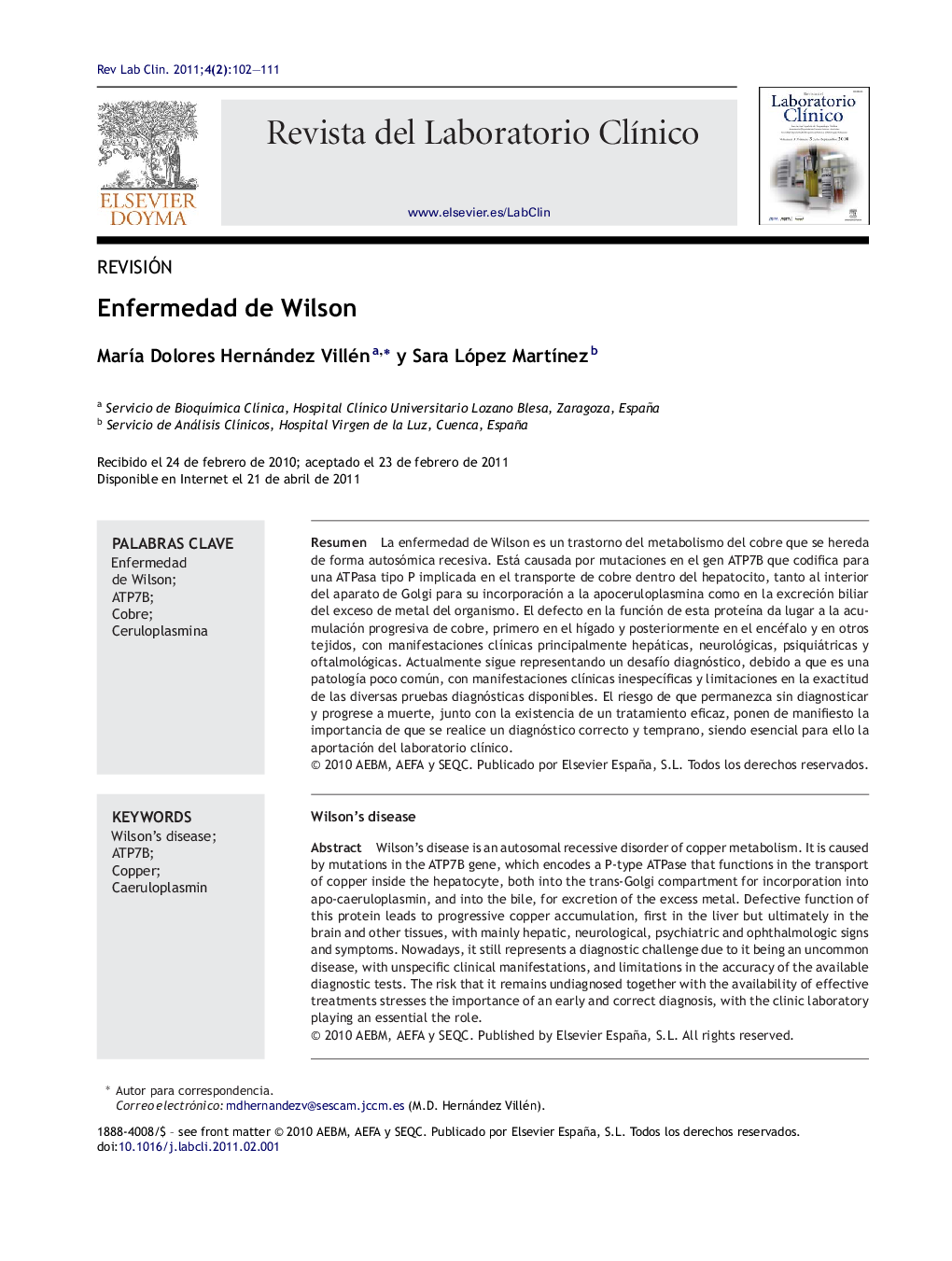| Article ID | Journal | Published Year | Pages | File Type |
|---|---|---|---|---|
| 2578173 | Revista del Laboratorio Clínico | 2011 | 10 Pages |
Abstract
Wilson's disease is an autosomal recessive disorder of copper metabolism. It is caused by mutations in the ATP7B gene, which encodes a P-type ATPase that functions in the transport of copper inside the hepatocyte, both into the trans-Golgi compartment for incorporation into apo-caeruloplasmin, and into the bile, for excretion of the excess metal. Defective function of this protein leads to progressive copper accumulation, first in the liver but ultimately in the brain and other tissues, with mainly hepatic, neurological, psychiatric and ophthalmologic signs and symptoms. Nowadays, it still represents a diagnostic challenge due to it being an uncommon disease, with unspecific clinical manifestations, and limitations in the accuracy of the available diagnostic tests. The risk that it remains undiagnosed together with the availability of effective treatments stresses the importance of an early and correct diagnosis, with the clinic laboratory playing an essential the role.
Related Topics
Life Sciences
Biochemistry, Genetics and Molecular Biology
Clinical Biochemistry
Authors
MarÃa Dolores Hernández Villén, Sara López MartÃnez,
